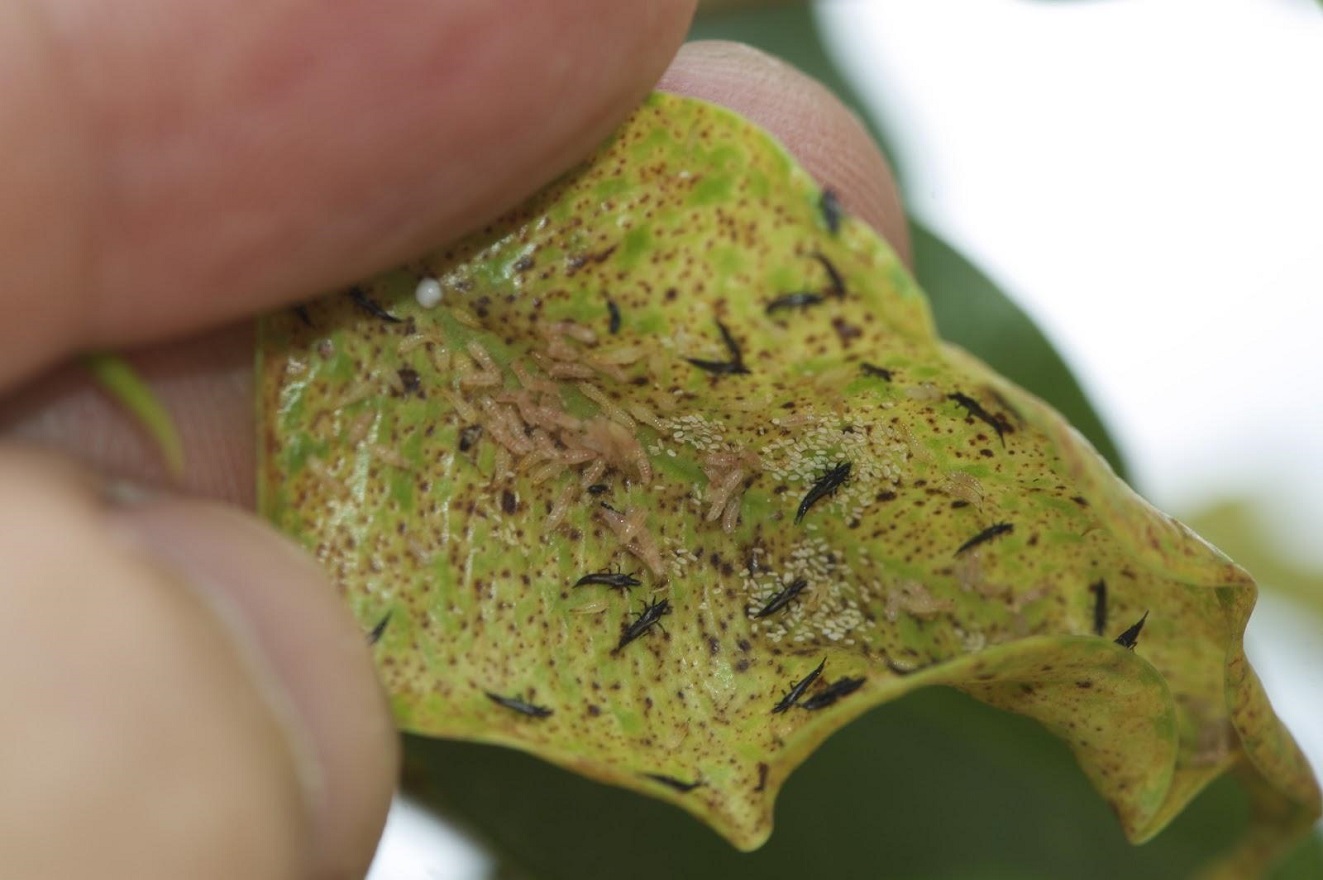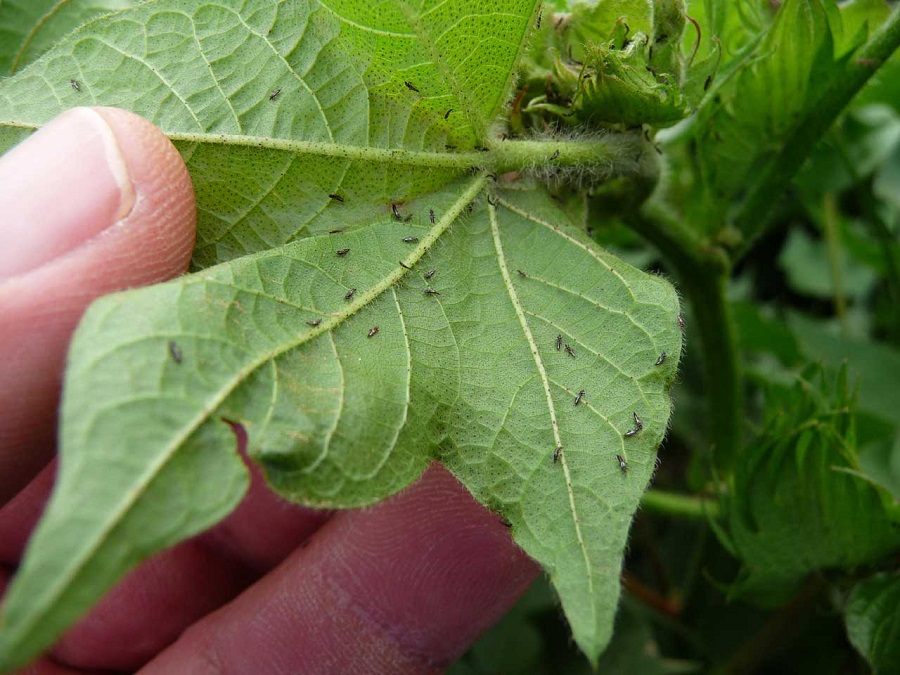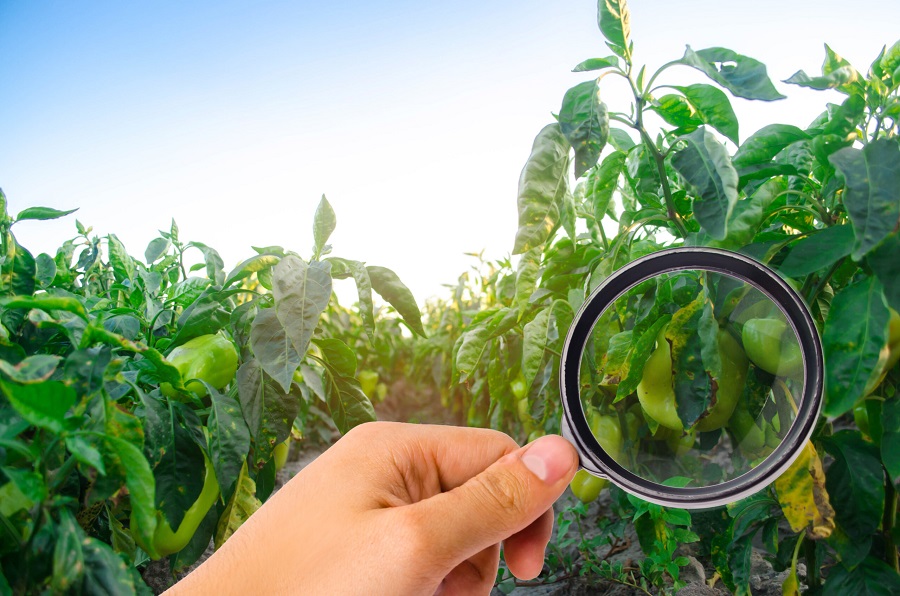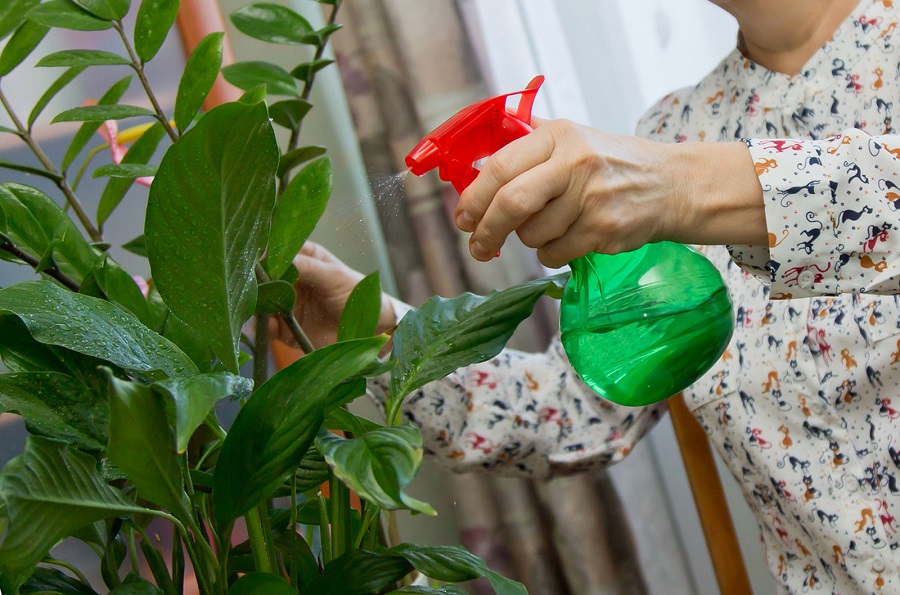Metodi di Controllo dei Tripidi - Come Sbarazzarsi dei Tripidi sulle Piante?
I tripidi sono insetti minuscoli ed è abbastanza difficile individuarli sulle foglie e sui fiori delle piante. Sono lunghi 1-2 mm, a seconda della varietà. Nonostante le piccole dimensioni, possono causare molti danni se invadono le piante d'appartamento o le coltivazioni di verdure. Attaccano soprattutto le foglie e i fiori menzionati, e le loro larve vivono nel terreno, dove si trasformano in insetti adulti. Controlla come sbarazzarsi dei tripidi.

Cosa sono i tripidi?
I tripidi sono un gruppo di insetti con bocca perforante-succhiante. Questi parassiti si nutrono di succhi e tessuti delle piante. Le larve dei tripidi possono andare in letargo nel terreno. Per questo motivo, è facile infettare le piante d’appartamento con loro.
A causa delle loro piccole dimensioni, gli insetti possono essere facilmente trascurati dal proprietario di una pianta. Si può notare la loro presenza quando la pianta infetta diventa visibilmente malata - appare attraverso le foglie e i fiori.

Quali tipi di tripidi attaccano le piante?
Ci sono alcuni tipi di tripidi, quindi assicurati di sapere come identificare i tripidi sulle piante d’appartamento. I tripidi della dracena sono i parassiti più comuni. Si nutrono di fichi, palme e di edere. Sono minuscoli - solo 1,5 millimetri di lunghezza e di colore giallo-marrone.
Il tripide della serra è un altro tipo comune di questi piccoli insetti. Proprio come i parassiti menzionati in precedenza, raggiungono solo 1,5 millimetri di lunghezza, ma il loro colore è marrone uniforme. Attaccano tipicamente le piante importate - le loro larve giacciono sepolte nel terreno.
I tripidi del tabacco sono ancora più piccoli - la loro lunghezza massima è di 1,2 millimetri. Sono gialli in primavera e in estate, e diventano marroni in autunno. Questo tipo di tripidi si nutre spesso di rosa, margherite gerbera e crisantemi.
Il tripide occidentale dei fiori è probabilmente il tipo più pericoloso di questi parassiti. Attaccano sia le piante decorative che le verdure. Diffonde il TSWV, un virus che causa la degenerazione delle piante infette. Gli insetti si moltiplicano rapidamente, e peggio - sono difficili da eliminare. È uno dei tripidi più grandi di questo gruppo, raggiungendo fino a 1,7 millimetri di lunghezza. Sono gialli e arancioni in primavera e in estate, mentre diventano marroni in autunno.

Come identificare i tripidi sulle piante da appartamento e da giardino?
Poiché i tripidi sono così piccoli, notare qualsiasi cambiamento nella pianta è il modo migliore per identificare questi parassiti. Foglie e fiori sono di solito i migliori indicatori della presenza dei tripidi. I segni più comuni includono:
- macchie di luce relativamente piccole,
- fiori deformi,
- superficie argentea sulle foglie.
I sintomi sono molti e non sono sempre evidenti.
C’è un buon metodo per controllare se i tripidi hanno attaccato la vostra pianta: mettete un foglio di carta bianca sotto una foglia e scuotetelo. Se minuscole “linee” in rapido movimento cadono sulla carta, potete essere sicuri che si tratta di tripidi.
Tripidi sulle piante - da dove vengono?
Ti stai chiedendo perché ci sono i tripidi sulle tue piante? Le loro larve si trasformano in insetti adulti nel terreno. Ecco perché vengono tipicamente introdotti - spesso inconsapevolmente - rinvasando o portando a casa nuove piante.

Quali piante sono solitamente danneggiate dai tripidi?
Non sei sicuro di quali siano le piante più vulnerabili ai tripidi? La Monstera è spesso attaccata da questi parassiti. Tieni presente, però, che questo insetto compare su molte specie. Le piante d’appartamento sono il suo obiettivo tipico, ma si possono incontrare i tripidi anche su:
- piante ornamentali,
- ortaggi,
- piante da serra.
Indipendentemente da dove appaiono, assicuratevi di seguire certi passi per combatterli. I tripidi sono tra i parassiti più difficili da eliminare, quindi il tempo è fondamentale, in questo caso.
Come sbarazzarsi dei tripidi - soluzioni fatte in casa
I rimedi casalinghi contro i tripidi implicano la prevenzione di alcune situazioni pericolose. Innaffiare la pianta regolarmente è uno dei metodi. Questo parassita non ama l’alta umidità e non attacca le piante che preferiscono l’ombra e il terreno umido. Inoltre, alcuni repellenti per zanzare possono anche respingere i tripidi.
Purtroppo, se la pianta viene attaccata dai tripidi, i rimedi casalinghi non sono abbastanza efficaci per aiutare in questo caso. Ecco perché l’insetticida chimico per il controllo dei tripidi è un’idea molto migliore, combinata con l’utilizzo di consigli ricevuti da giardinieri esperti.
Come uccidere i tripidi con prodotti chimici - quali prodotti sono i migliori?
Se vuoi sbarazzarti dei tripidi in modo efficace, hai bisogno di buoni insetticidi. Tieni presente che i prodotti usati sulle piante d’appartamento non sempre possono essere usati sulle verdure. È possibile acquistare prodotti per entrambi i tipi di piante in un negozio di giardinaggio - fisico o online. Chiedete allo specialista che vende questi prodotti quale insetticida per il controllo dei tripidi è il migliore nel vostro caso.

📍 Ci sono i tripidi sulle mie piante?
I tripidi di solito attaccano fiori, foglie e altri angoli di una pianta. Si nutrono del succo della pianta, che estraggono con le loro bocche perforanti-succhianti. A causa delle loro piccole dimensioni, i tripidi sono difficili da individuare.
📍 Come riconoscere i danni dei tripidi?
I tripidi sulle piante causano diversi tipi di danni, a volte piuttosto insoliti, per esempio macchie bianche, una superficie argentea. Di solito si possono individuare i segni di questi parassiti su foglie e fiori. Dove appaiono tipicamente i tripidi? La Monstera è uno dei loro obiettivi più comuni.
📍 Controllo dei tripidi - cosa odiano i tripidi?
I tripidi sulle rose e altre piante sono un problema eccezionalmente fastidioso. Danneggiano fiori e foglie. Se volete respingerli, assicuratevi di annaffiare la pianta regolarmente. Questi insetti non amano l'umidità.
📍 Come uccidere i tripidi?
I prodotti speciali progettati per uccidere i tripidi sono il miglior rimedio per un'infestazione di questi insetti. Potete acquistare un insetticida per tripidi in un negozio di giardinaggio. Consultate un commesso su quale prodotto scegliere - per essere sicuri che si sbarazzi dei fastidiosi parassiti.
Articoli in primo piano




